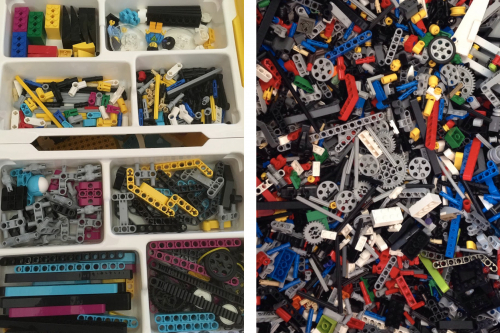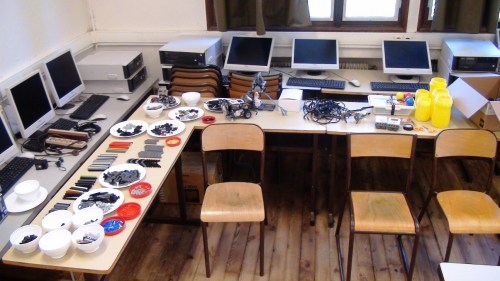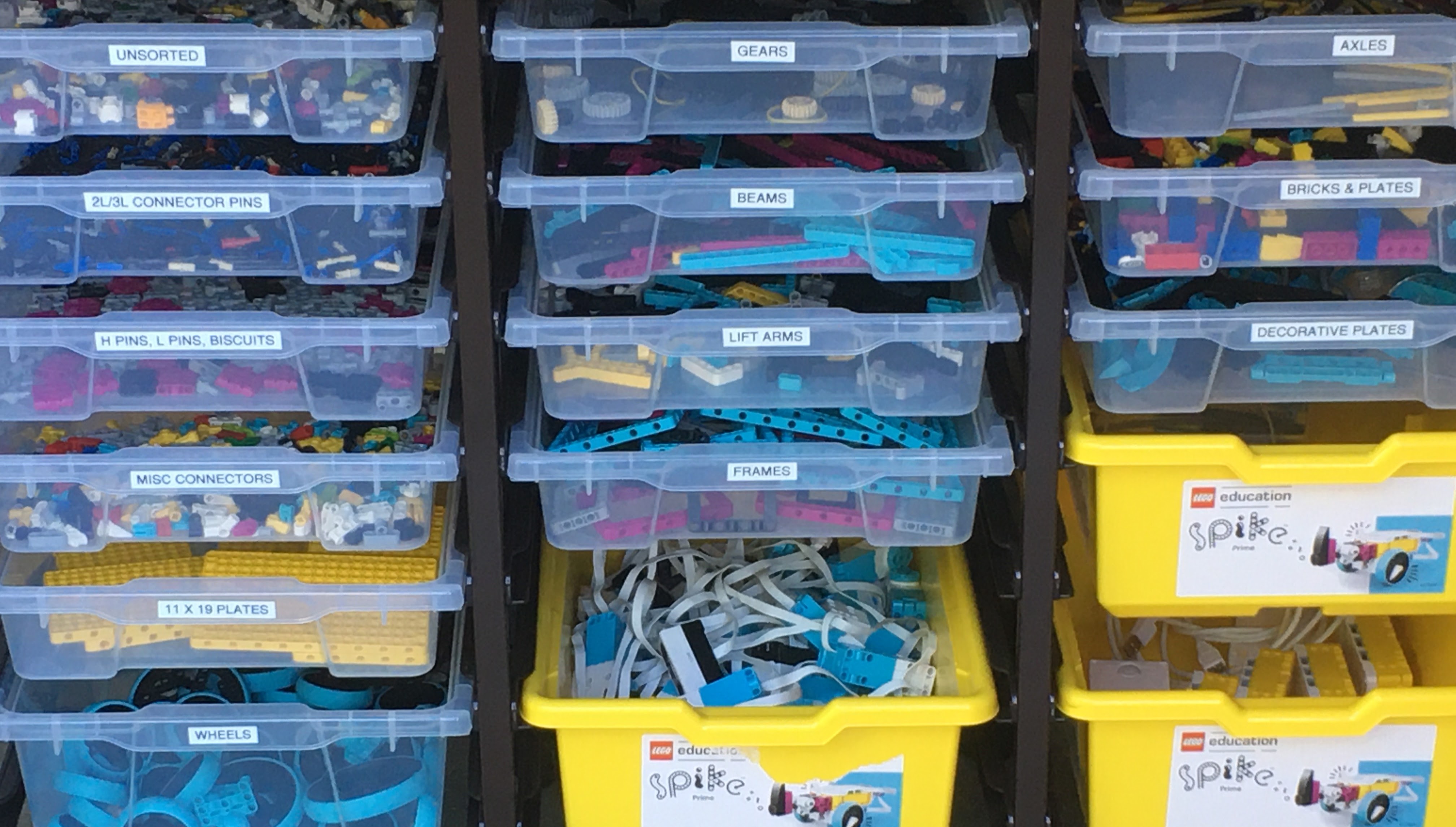LEGO Storage In The Classroom

Every teacher who uses LEGO materials with their students has had to deal with the challenge of organisation and storage. There is no one solution and your requirements may well change over time, but here are some considerations…
- How many sets and extra pieces do you have?
- Do you have a budget for buying extra containers, cupboards, etc?
- How much space do you have for storage?
- How much space do the students have for building?
- How easy will it be for students to access the storage area during class?
- How will your classes be structured?
- How many participants/teams?
- Does the material need to be shared between different classes?
- Is the space shared with other classes?
- Is security a consideration?
- Where/when will battery packs be charged between lessons?
- How much time do you and your students want to spend sorting compared to building?
Other than the "junkyard" approach, the two most common approaches to storing LEGO in the classroom are set-based and part-based. The more material you have and/or the longer your robotics program has been running the more likely you are to go with a part-based approach or some combination of part-based and set-based. Beginning robotics teachers are often concerned with accounting for individual pieces. After a few years, however, you get tired of counting individual pieces and appreciate of the freedom that part bins give for design and building.
| Type of storage | Positives | Negatives |
| Set-based Each set is kept in its original box. |
Works well if you only have a few sets. Ideal for building models that use a core set. No extra storage containers required. Teams don’t have to fight for pieces. Each team is responsible for maintaining their own set. If well maintained, it may be easier to account for pieces, particularly smaller pieces. |
Limits building and design possibilities. Sorting out kits and counting pieces can be tedious. Requires frequent policing to maintain separate kits (which works against collaboration between teams) or else be prepared to see lots of “part drift” between sets. |
| Part-based Parts are categorized and placed in separate bins, e.g., wheels, motors and sensors, beams, etc. |
Works well if you have the equivalent of ten or more sets. Encourages open-ended building Easy to account for larger parts (hubs, motors, sensors). Easy to add parts from expansion and other sets. Very quick to do a rough sort of pieces into broad categories. |
Care needs to be taken to ensure all teams have equal access to pieces that are in short supply. Depending on how fine-grained you choose to sort the pieces, extra storage containers may be required. Maybe harder to account for smaller pieces. |
| Mini kits Smaller kits for specific purposes, e.g., only the pieces required to make a standard driving base. |
Very easy to account for pieces. Less parts to manage. Deconstructing and packing up is easy. |
Extra storage (i.e. small boxes) may be required. Limited building possibilities (in some situations this could be a positive). Requires extra time for the teacher to sort and set up the mini kits. |
Although the focus here is on how you store your LEGO, it’s just as much about how you sort your LEGO.
With the part-based approach, some teachers like to have everything sorted to the individual part level, but it may work better to sort the parts into broad categories. After all, you want to find a balance between time spent sorting and time spent building.
Here are some general rules of thumb when it comes to sorting…
- If you’re not sure whether a particular piece belongs in one bin or another, think about it from someone else’s point of view. If they’re going to end up looking in both bins anyway, then it probably doesn’t matter.
- If you go looking for a piece and can’t find it, how confident are you that it isn’t in your collection? I.e. your collection is well sorted, then not finding it means you don’t have it (and when you by some replacements, you won't then suddnely find that you had 20 of them already.)
- In general, it’s easier to find the piece you’re looking for if the parts are sorted by part type than by color.

Furniture on wheels can be particularly useful.

Finally, although sorting can feel quite laborious at times, it’s useful to remember that many students (and their teachers!) find sorting LEGO to be quite therapeutic - particularly during uncertain times!

Thanks to Kat Kelly, Josep Fargas, Ethan Danahy, and Wayne Burnett for their contributions to this post.

Leave a Comment
Where can you find a storage cart like that? I've tried looking everywhere and can't find something that has clear bins, easy to pull out and push back in, and of that size.
The brand of that storage system is “Ergerite” - the systems includes clear bins and trolleys of different sizes. I'm in Australia and purchased from one of the local LEGO Education distributors, but it looks like they're available in other countries. As the photos show, standard LEGO bins fit into them reasonably well, but it's not a great fit (too much tolerance so heavy bins in particular can slip down out sometimes), so I ended up getting more of the clear trays.
At home with my kids, we have bazillions of pieces and after some years, as the collection get bigger and bigger, i found out their creativity was getting lost in the mess. Now i use the part-based approach and already can see a huge improvement on their interest and creativy. Even building more complex builds. I had some Mindstorms kits, and that is “only with dad's” time, so they can get the organize way from it and use on their own colletion. part-based approach is amazing.